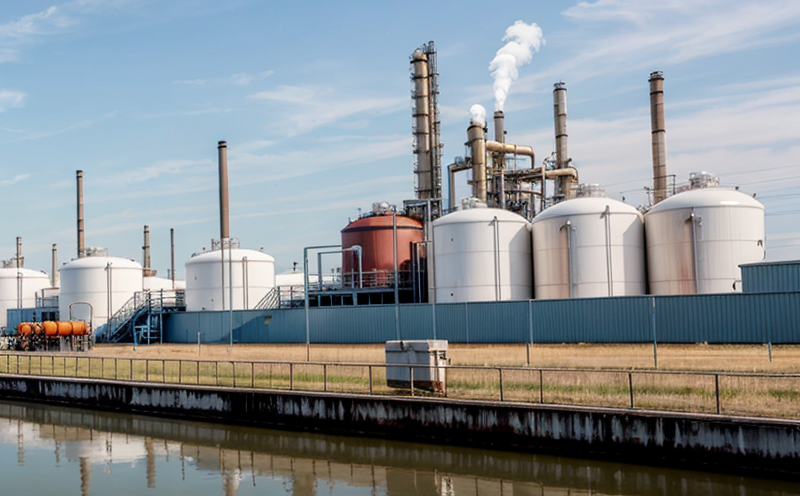UNE EN 13528 Diffusive Sampling Safety Testing in Air
The CEN standard UNE EN 13528 specifies the methodology for diffusive sampling of gaseous substances, particularly hazardous materials like volatile organic compounds (VOCs) and other airborne contaminants. This testing method is essential in occupational health and safety contexts to ensure compliance with international regulations such as OSHA or EU directives.
The primary objective of this standard is to determine the exposure levels of employees to these harmful chemicals by measuring their concentrations in ambient air over a defined period using passive sampling devices (PSDs). These PSDs are small, lightweight, and portable, making them suitable for deployment in various industrial settings. The standard ensures that the sampling results accurately reflect real-time exposure conditions.
The testing procedure involves placing the PSDs at strategic locations within an enclosed space or during outdoor operations where there is a potential risk of exposure to hazardous chemicals. The devices capture the target analytes and then are analyzed using gas chromatography (GC) or other analytical techniques compliant with international standards like ISO 16007.
UNE EN 13528 emphasizes the importance of selecting appropriate sampling parameters such as the type of PSD, sampling duration, and placement within the workspace. Compliance officers should carefully consider these factors to ensure accurate measurement and reliable data. The standard also provides guidance on validating the performance of the sampling devices before use.
The results from this testing are critical for identifying potential risks and implementing necessary control measures to protect workers' health and safety. This information is essential for quality managers and R&D engineers in developing safer products or processes. For procurement teams, understanding these standards ensures that they select suppliers who adhere to high-quality testing protocols.
The standard also covers the handling of samples post-testing, including storage conditions and transport requirements to maintain sample integrity. It specifies acceptance criteria based on statistical methods ensuring that test results are reliable and reproducible.
By adhering to UNE EN 13528, organizations demonstrate their commitment to occupational health and safety standards, thereby reducing the risk of accidents or incidents related to chemical exposure.
Benefits
The implementation of UNE EN 13528 offers numerous benefits for industrial settings:
- Enhanced Compliance: Ensures adherence to international occupational health and safety regulations.
- Risk Reduction: Identifies hazardous chemical exposure risks early, allowing for preventive measures.
- Data Reliability: Provides accurate and reproducible data on air quality, supporting informed decision-making.
- Cost Efficiency: By identifying issues proactively, it minimizes the costs associated with accidents or worker illnesses.
- Operational Excellence: Promotes a safer working environment, contributing to higher employee morale and productivity.
The standard also supports continuous improvement initiatives by providing insights into areas where improvements can be made. This proactive approach enhances the overall operational excellence of an organization.
Industry Applications
| Industry Sector | Application |
|---|---|
| Chemical Manufacturing | Monitoring the release of volatile organic compounds (VOCs) and other hazardous chemicals during production processes. |
| Petrochemical Processing | Safety testing for flammable gases and vapors in refining operations. |
| Pharmaceutical Manufacturing | Evaluating the safety of solvents and reagents used in drug synthesis. |
| Paints & Coatings | Detecting volatile organic compounds (VOCs) released during formulation or application processes. |
| Biochemical Research | Safety assessment of toxic substances used in laboratory environments. |
| Rubber & Plastics Manufacturing | Testing for the presence of harmful by-products from polymerization reactions. |
| Textile Manufacturing | Evaluating emissions from finishing and dyeing processes. |
The use of UNE EN 13528 is not limited to these sectors but can be applied across industries where there are risks associated with airborne chemical exposure. The standard's versatility makes it a valuable tool for any organization seeking to protect its workforce effectively.
Use Cases and Application Examples
The following scenarios illustrate how UNE EN 13528 can be applied in real-world situations:
- Monitoring Process Emissions: Continuous monitoring of emissions during chemical processing to ensure compliance with local regulations.
- Emergency Response Planning: Pre-planning for potential emergencies by assessing the air quality around storage tanks or other hazardous areas.
- Employee Training: Using test results to inform new employees about specific hazards they may encounter in their work environment.
- Facility Design: Incorporating findings from UNE EN 13528 into facility design to minimize exposure risks for workers.
- Product Development: Ensuring that the development of new products does not inadvertently increase chemical exposure risks.
- Risk Assessment: Conducting comprehensive risk assessments before starting any new project or operation involving chemicals.
In conclusion, UNE EN 13528 plays a crucial role in ensuring occupational health and safety by providing accurate data on airborne contaminant levels. Its application across various industries underscores its importance in protecting workers' health and minimizing risks associated with chemical exposure.





